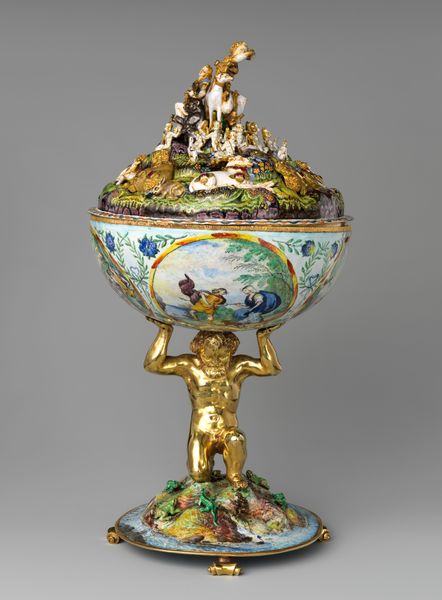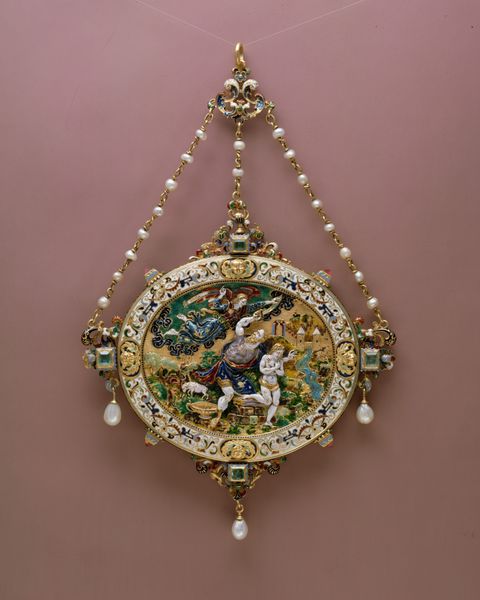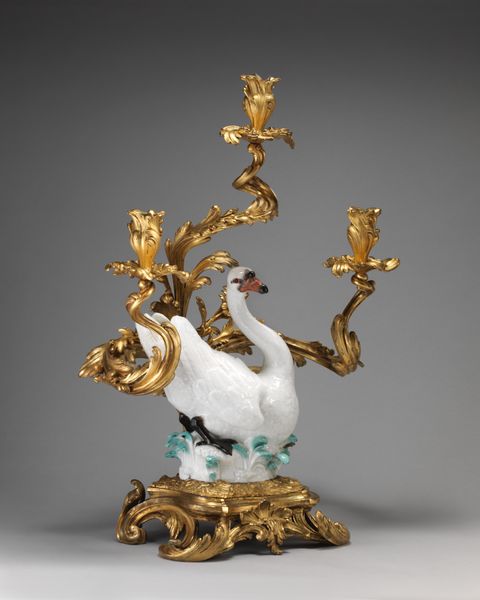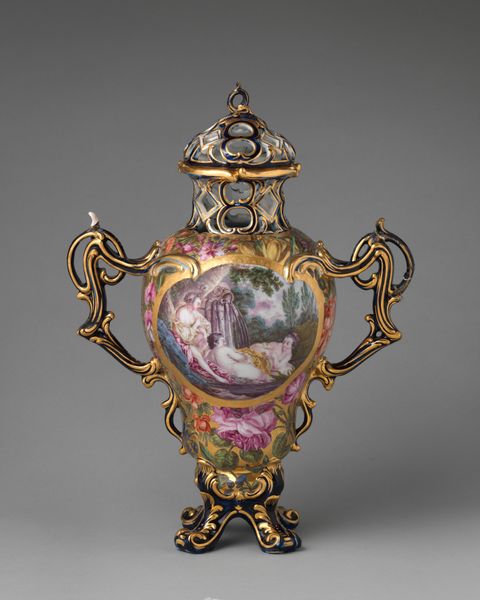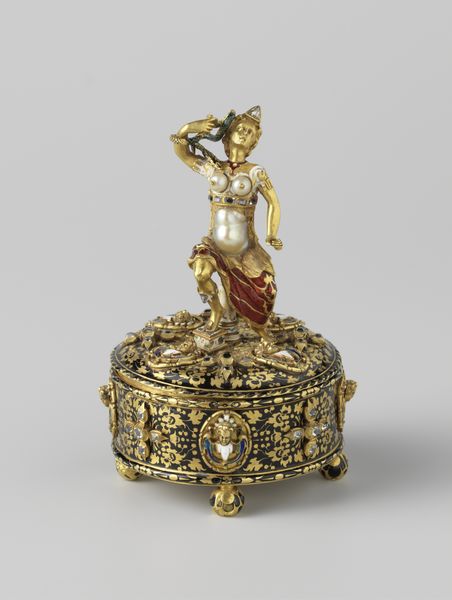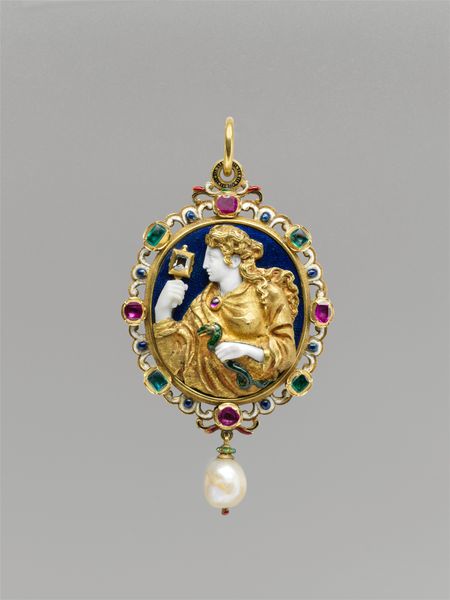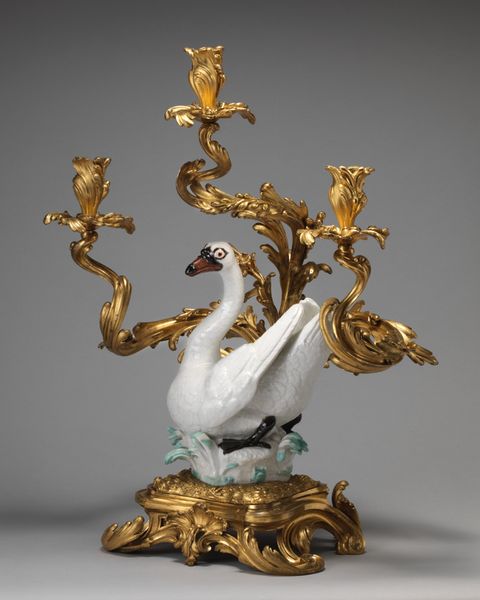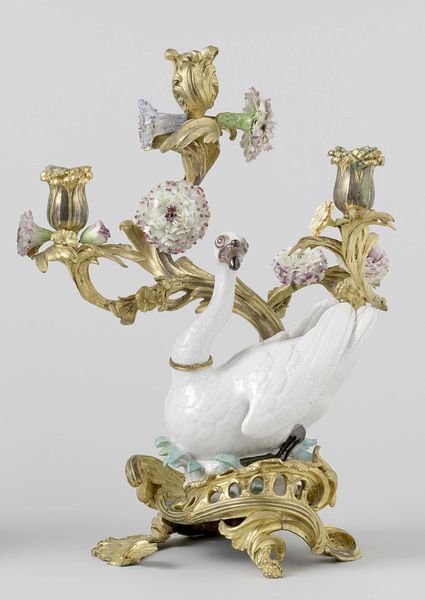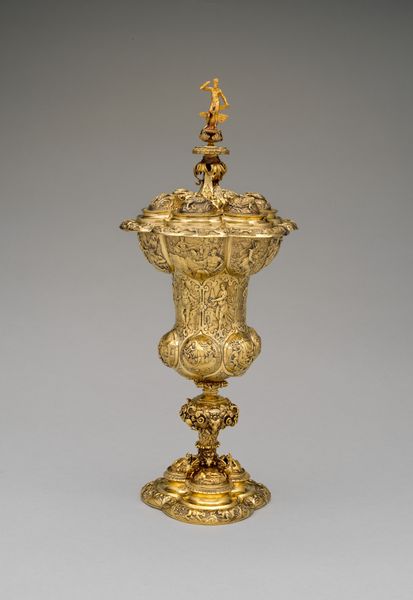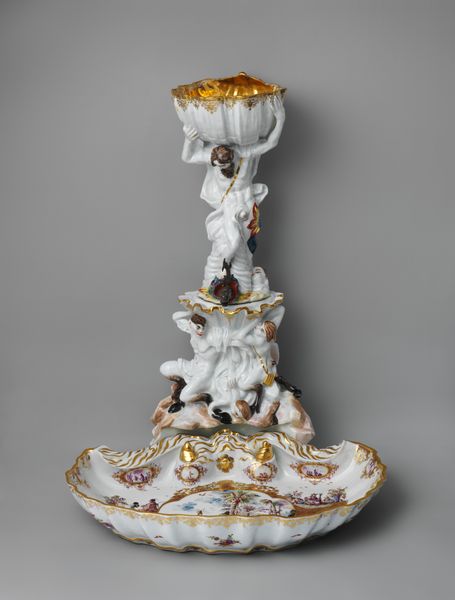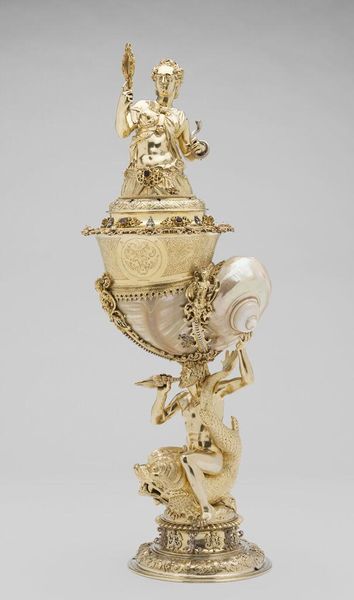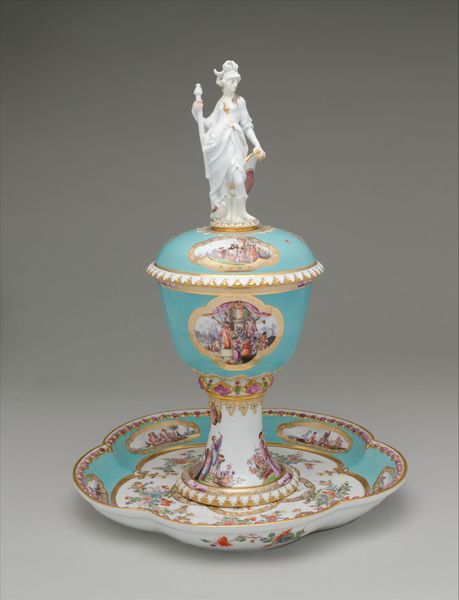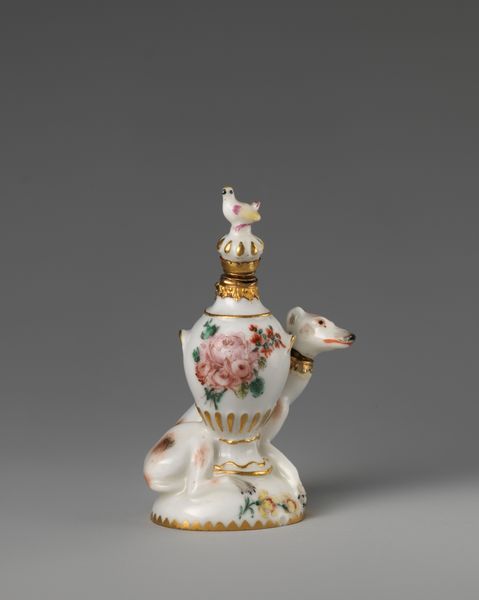
Pendant with a Triton Riding a Unicorn-like Sea Creature 1865 - 1900
0:00
0:00
metal, gold, sculpture
#
metal
#
gold
#
fantasy-art
#
sculpture
#
decorative-art
#
miniature
Dimensions: Height: 4 1/2 in. (11.4 cm)
Copyright: Public Domain
Curator: Immediately I'm struck by its dazzling, fairytale-like quality. It's whimsical, a bit over the top, and clearly meant to impress. Editor: You're right, it has that allure. What we're looking at is a pendant created by Reinhold Vasters sometime between 1865 and 1900. It's crafted from gold and other metals, and currently resides at the Metropolitan Museum of Art. Curator: Vasters, ah, reviving Renaissance splendor in the late 19th century. Look at that enameled sea creature—more unicorn than horse, really. And the triton astride its back! It's all a rather potent, yet peculiar, allegory. What could it signify in its era? Editor: The Victorian era, no less. Power, status, definitely. Consider the social functions of jewelry then—flaunting wealth and taste. A piece like this wasn’t just ornamental, but rather performative. The imagery itself, however, it harkens back to earlier artistic movements. Curator: Precisely, to Neoplatonic ideals revived during the Renaissance! This blending of classical mythology, with a triton a sea deity, combined with the chaste unicorn symbolizes the triumph of reason over base instinct and harmony achieved by humans. Editor: Interesting how this blends earlier symbolism with the era it was made in. Wouldn’t you agree there is a Victorian fascination with the miniature—an embrace of intricate detail during the burgeoning age of industrialization? An escape perhaps. Curator: Without a doubt. It mirrors the human desire to master nature and time— to miniaturize and control a larger world within artifice. And a touch of the fantastical made it irresistible, even now. Editor: Thinking about how the Metropolitan acquired such a piece speaks volumes about collecting practices and how tastes are cultivated within elite circles in America during that period. But even more compelling is considering Vasters’ work in terms of 19th century workshop practices and how that affects ideas of authenticity. Curator: In essence, it continues to embody the tension between its revivalist roots and contemporary messages about craftsmanship. It reminds me that icons evolve. Editor: True. And in this work, it offers a lens to view not only changing social values but also persistent human needs and expectations through an artistic interpretation.
Comments
No comments
Be the first to comment and join the conversation on the ultimate creative platform.
